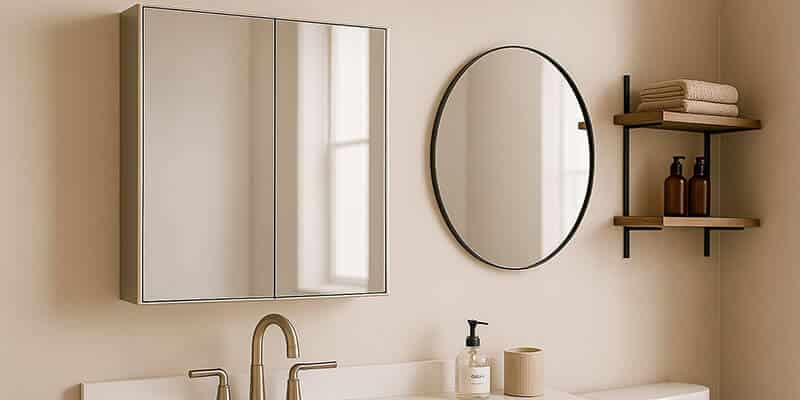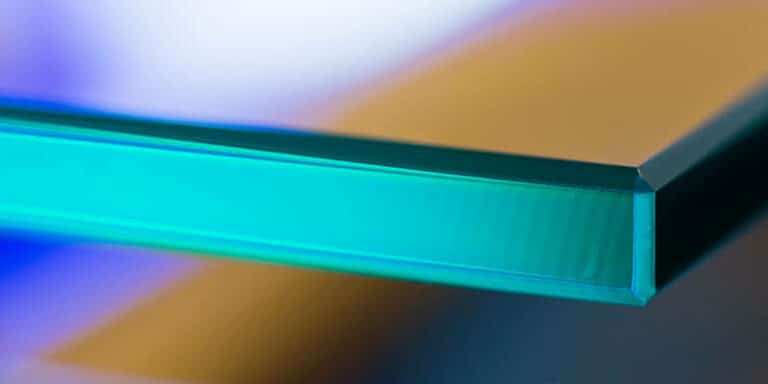Medicine cabinets have been a bathroom staple for decades, but their popularity has fluctuated with changing design trends. In recent years, some homeowners have replaced traditional medicine cabinets with floating mirrors and open shelving, raising questions about whether these functional fixtures still have a place in modern bathroom design. This article explores the current status of medicine cabinets, their evolution, and how they’re adapting to contemporary aesthetics and needs.
A Brief History of the Medicine Cabinet
Origins and Traditional Purpose
Medicine cabinets first appeared in the 19th century as mirrored boxes designed to store personal hygiene items, medications, and first-aid supplies. By the mid-20th century, they had become standard fixtures in most North American homes. Traditionally positioned above the vanity or sink and often recessed into the wall, these cabinets provided essential storage while maintaining a clean bathroom appearance.
Popularization and Design Evolution
From the 1950s through the 1990s, medicine cabinets were primarily functional and utilitarian, featuring simple metal or wood frames with limited stylistic variations. The early 2000s saw the introduction of mirrored cabinets with adjustable shelves, offering more flexibility for storage needs. Today, modern medicine cabinets have evolved significantly, incorporating stylish designs, integrated lighting, and technology features that align with contemporary bathroom aesthetics.
When (and Why) Are People Choosing Not to Use Them?
Reasons Homeowners Are Removing Medicine Cabinets
Despite the evolution of medicine cabinet design, some homeowners still opt to remove them. Comments from design forums reveal common motivations:
“I wanted floating mirrors without clutter,” noted one Houzz user, expressing a preference for simpler wall treatments.
“We needed a cleaner look and installed drawers instead,” shared a Reddit user, highlighting the shift toward alternative storage solutions.
Many modern vanities now come with deep drawers specifically designed for items traditionally stored in medicine cabinets, potentially eliminating the need for wall storage. For those prioritizing a minimalist aesthetic, the visual simplicity of a plain mirror may outweigh the practical benefits of a medicine cabinet.
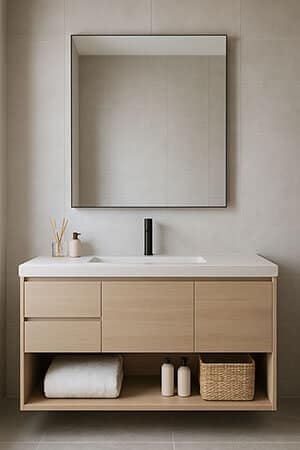
Common Alternatives
Those who forego medicine cabinets typically implement alternative storage solutions:
Floating mirrors paired with drawer organizers or under-vanity storage have become a popular choice for those seeking clean lines.
Built-in wall niches, as suggested by NelsonKB, provide recessed storage without interrupting the wall plane. These tiled recesses can be incorporated during construction or renovation to provide dedicated space for frequently-used items.
Open shelving with decorative baskets allows for both display and concealed storage. This approach combines aesthetics with functionality, though it may not provide the privacy of closed storage for personal items.
Wall-mounted vertical storage towers positioned beside the vanity offer substantial storage without requiring recessed installation. These tall, narrow cabinets maximize vertical space while maintaining a small footprint.
Freestanding linen cabinets placed within the bathroom provide ample storage for towels, toiletries, and personal care items. In larger bathrooms, these pieces can serve as both storage and design elements.
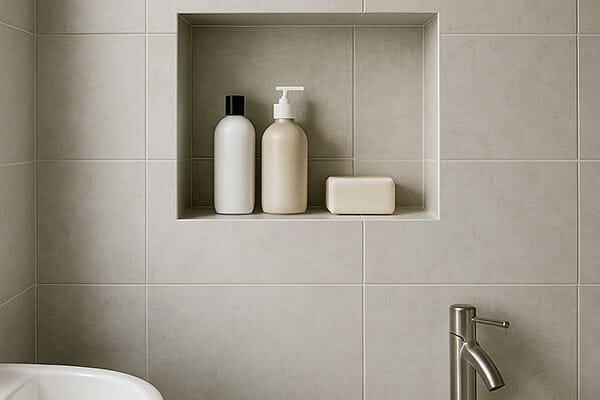
So… Are Medicine Cabinets Out of Style?
Key Trends and Perceptions
The rise of minimalism and decluttering philosophies has led some designers and homeowners to replace traditional medicine cabinets with plain mirrors, creating a cleaner look. A recent thread on Reddit’s r/Homebuilding revealed mixed opinions about medicine cabinets—some users described them as “ugly and dated,” while others insisted they couldn’t live without the storage benefits. On Quora, many homeowners cited “clean lines” and improved aesthetics as their primary reasons for removing medicine cabinets during renovations.
The popularity of open shelving and drawer storage has grown as an aesthetic alternative to medicine cabinets. These options allow for decorative display while providing accessible storage for frequently used items.
The Resurgence in Popularity
Despite these challenges, medicine cabinets are experiencing a comeback in high-end bathroom designs. Modern remodels frequently include lighted, recessed mirrored cabinets that blend seamlessly with contemporary aesthetics. According to bathroom fixture experts at Okay Mirror company, LED-lit, anti-fog, and Bluetooth-enabled cabinets are selling particularly well in 2024-2025.
“Medicine cabinets have evolved from purely functional items to statement pieces that enhance the overall bathroom design,” notes an expert from Wellfor, a leading bathroom fixture company. “Today’s cabinets feature sleek profiles, integrated lighting, and smart technology that appeals to tech-savvy homeowners.”
Designer approaches now include floating mirrored cabinets and complementary side storage units. According to UniqueVanities, medicine cabinets are increasingly viewed as “functional decor,” especially when featuring custom frames that coordinate with the overall bathroom design.
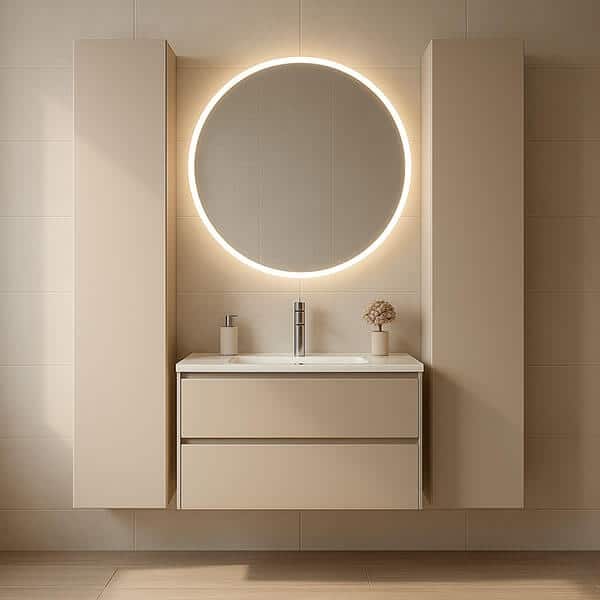
What the Numbers Say (Data & Surveys)
Recent market data supports the resurgence of medicine cabinets. Wellfor and NelsonKB reported significant increases (10-30%) in sales of lighted medicine cabinets between 2023 and 2024. The Houzz Design Trend Report found that medicine cabinets are included in 37% of small bathroom remodels, indicating their continued relevance in space-constrained environments.
UniqueVanities reports that among their top-selling vanity accessories, mirrors, under-sink storage, and LED-equipped medicine cabinets consistently rank in the top three. This data suggests that while plain mirrors remain popular, functional storage solutions—especially those with integrated lighting—continue to meet important consumer needs.
What’s Next? The Future of Medicine Cabinets
Smart Cabinets
The integration of technology into medicine cabinets continues to advance rapidly. Future models will likely include voice control capabilities, allowing hands-free operation of lighting and other features. Bluetooth audio systems are already appearing in premium models from brands like Kohler and OkayMirror, transforming the humble cabinet into an entertainment hub.
Some manufacturers are developing cabinets with built-in screens that display weather, news, or personal calendars while users prepare for their day. These smart features represent a significant departure from traditional medicine cabinets, positioning them as central components of connected home ecosystems.
Modular Panels & Custom Interiors
Customization is becoming increasingly important in cabinet design. New models feature peg systems, magnetic strips, and retractable trays that allow users to configure storage according to their specific needs.
Adjustable dividers and specialized compartments for items like electric toothbrushes, razors, and makeup brushes provide organization that conventional shelving cannot match. Some high-end cabinets now include temperature-controlled sections for preserving cosmetics or medications that require specific storage conditions.
Sustainability Trends
Environmental considerations are influencing medicine cabinet design and construction. Eco-friendly materials like bamboo and recycled aluminum are appearing in new models, appealing to environmentally conscious consumers.
Energy-efficient features such as motion-sensor lighting reduce electricity usage while providing convenience. Some manufacturers are exploring solar-powered options for lighting, particularly for cabinets installed in bathrooms with natural light exposure.
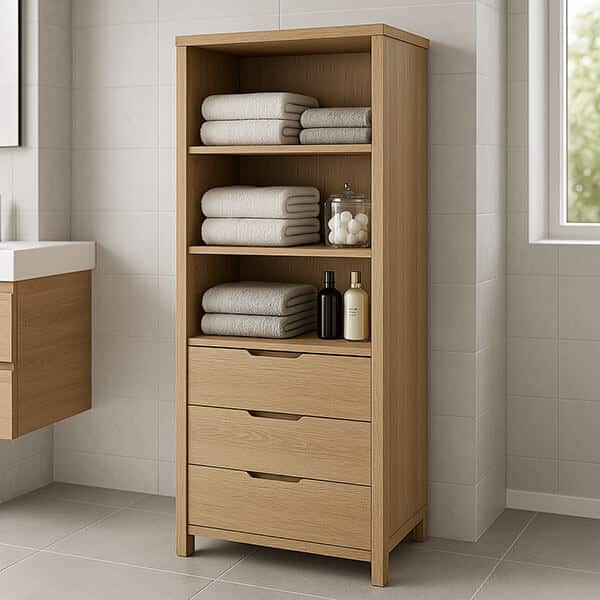
Final Verdict: Are Medicine Cabinets Out of Style?
No, medicine cabinets are not out of style—they’re evolving. Today’s homeowners are increasingly drawn to functional, stylish, and tech-savvy versions that bear little resemblance to the utilitarian boxes of previous decades.
The key shift isn’t whether medicine cabinets are used but how they’re designed and integrated into the overall bathroom concept. While some homeowners still opt to eliminate them in favor of minimalist mirrors, many are finding that modern medicine cabinets can satisfy both aesthetic and practical requirements.
Those who choose to forgo medicine cabinets typically compensate with alternative storage solutions like vanity drawers, wall niches, or decorative shelving. The fundamental need for bathroom storage remains constant even as design preferences change.
The most important takeaway for those considering a bathroom renovation is that mirrors can be more than mere reflections—they can work double-duty as functional storage that enhances daily routines while maintaining design integrity.
